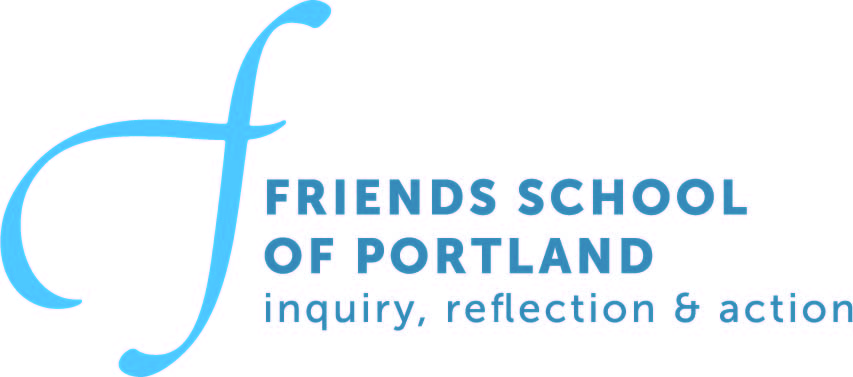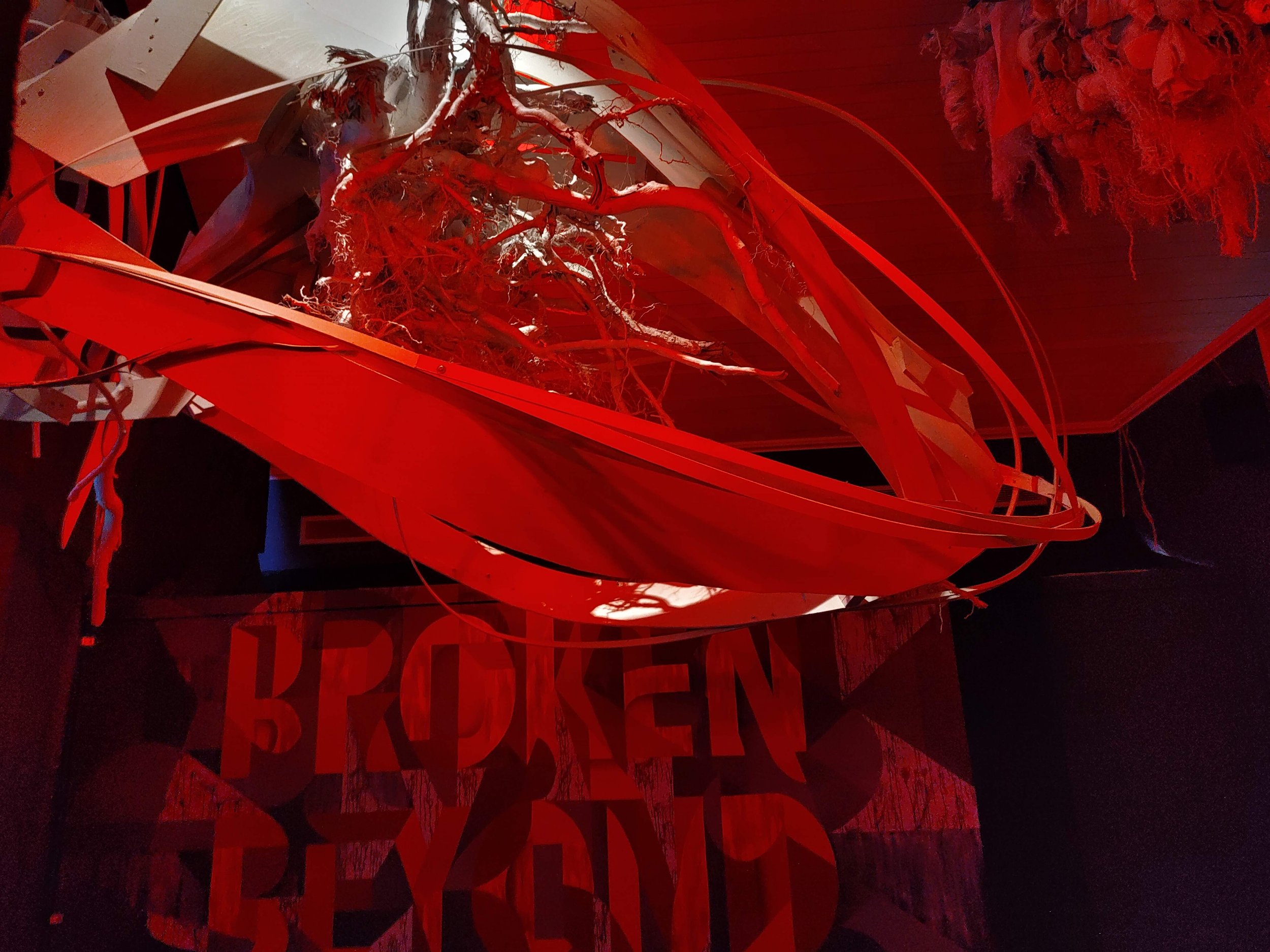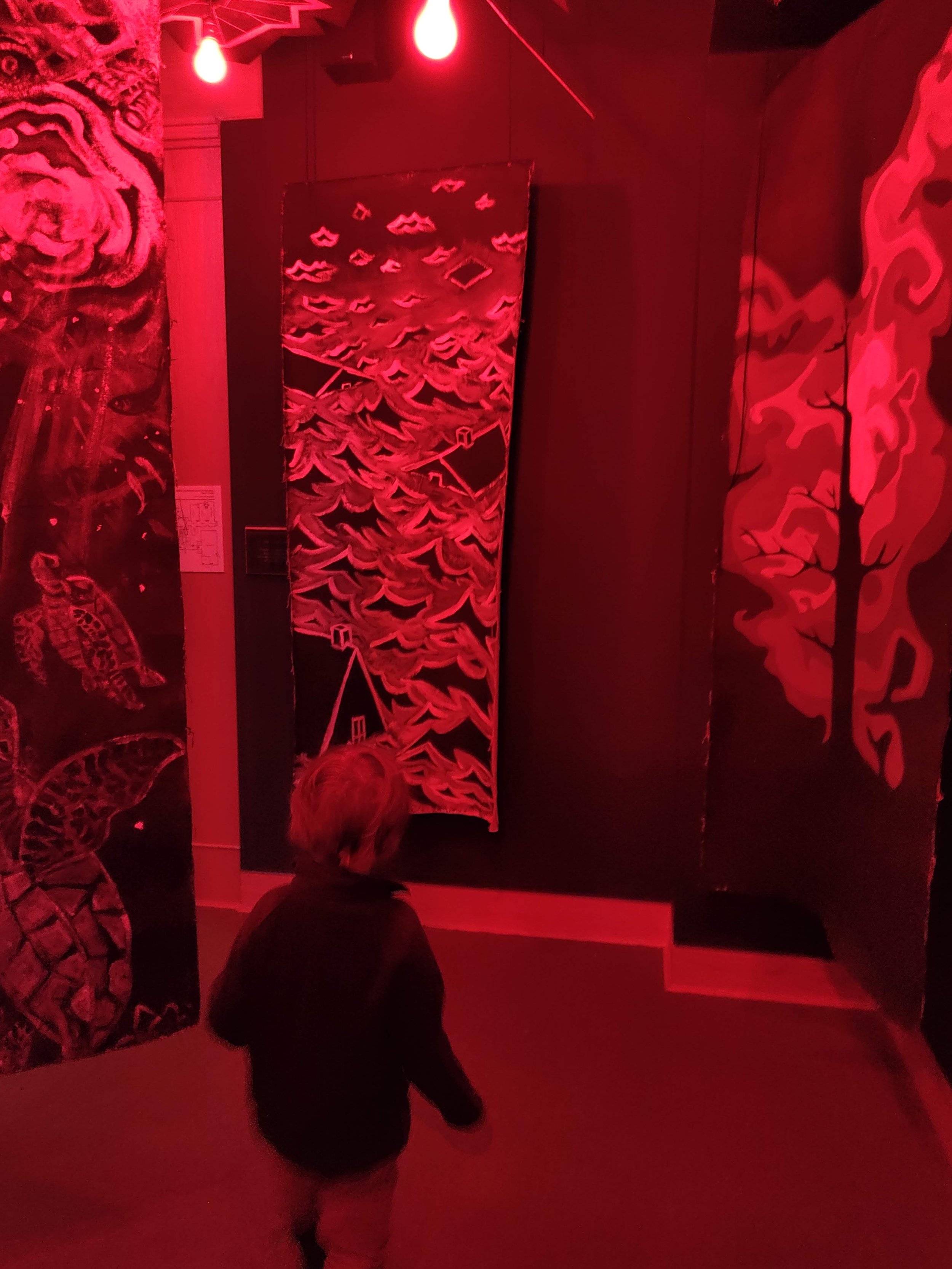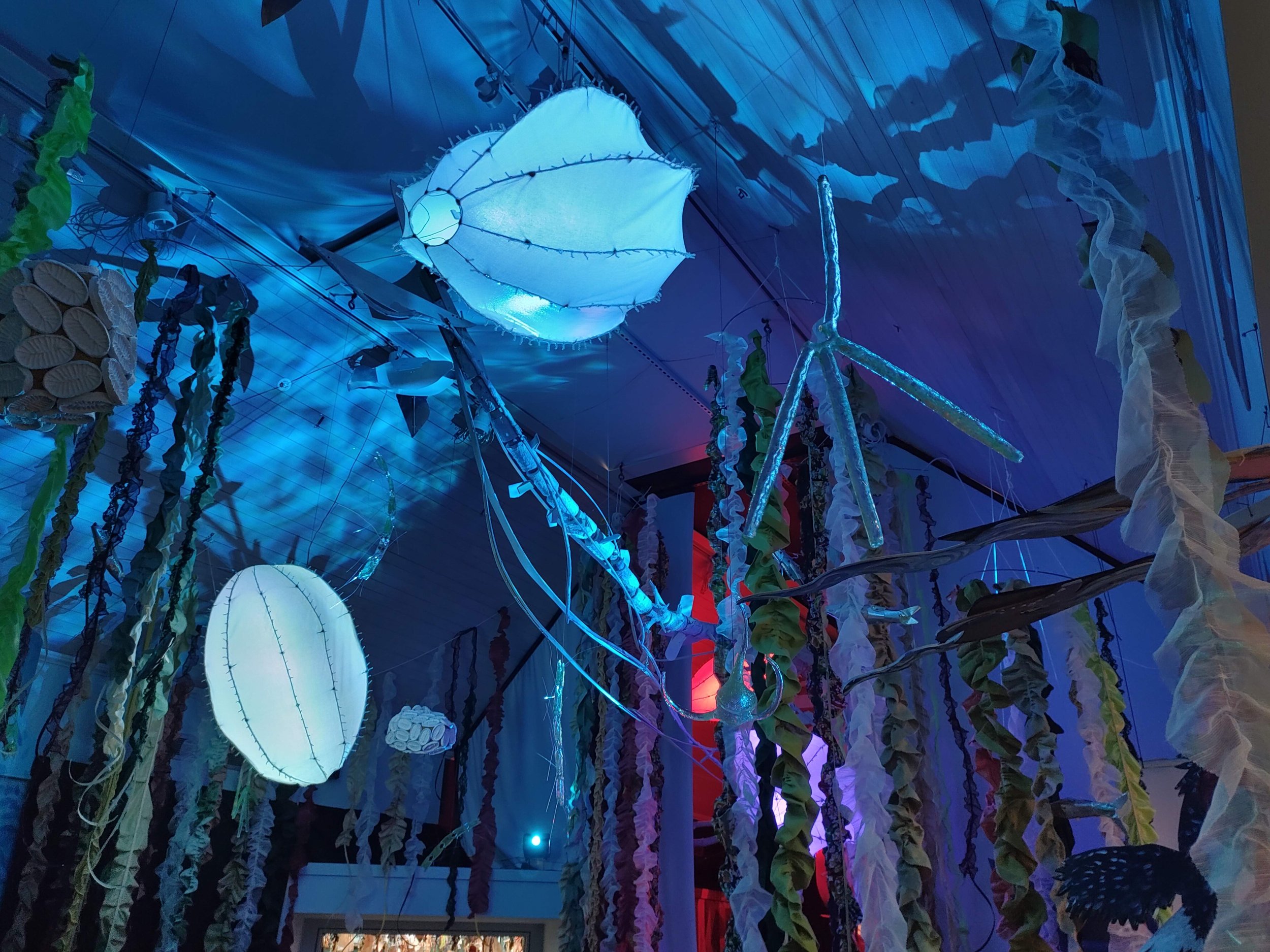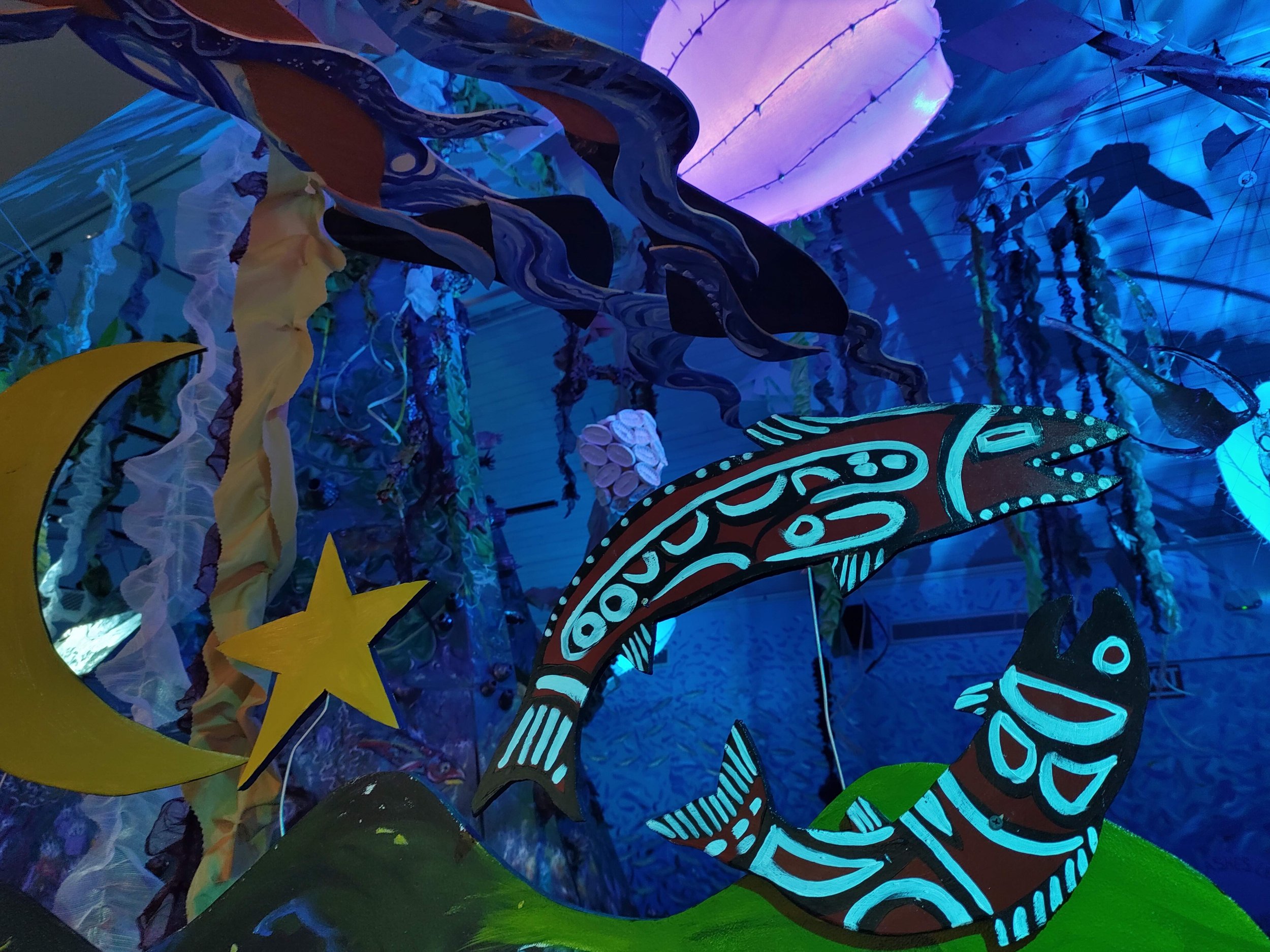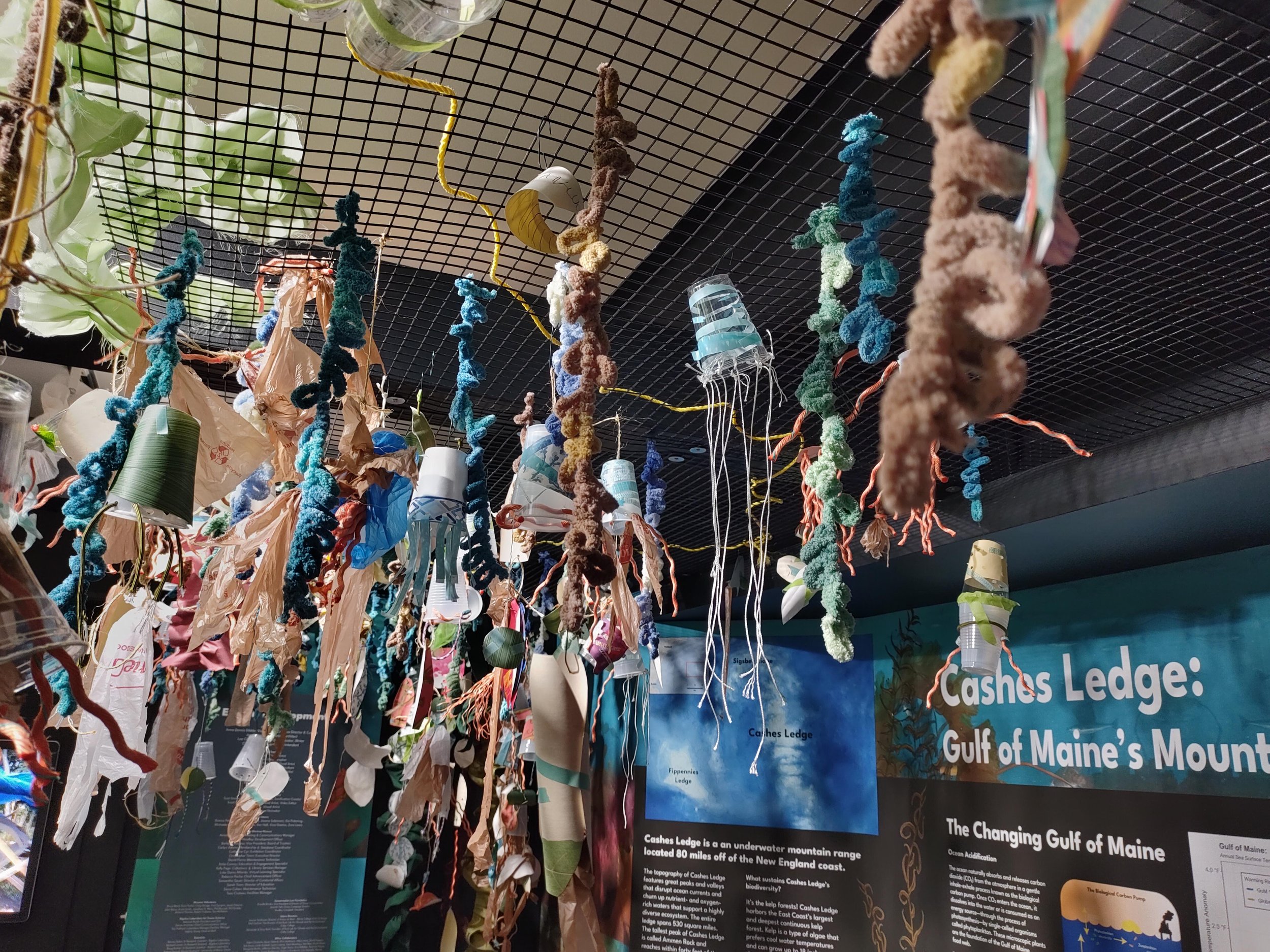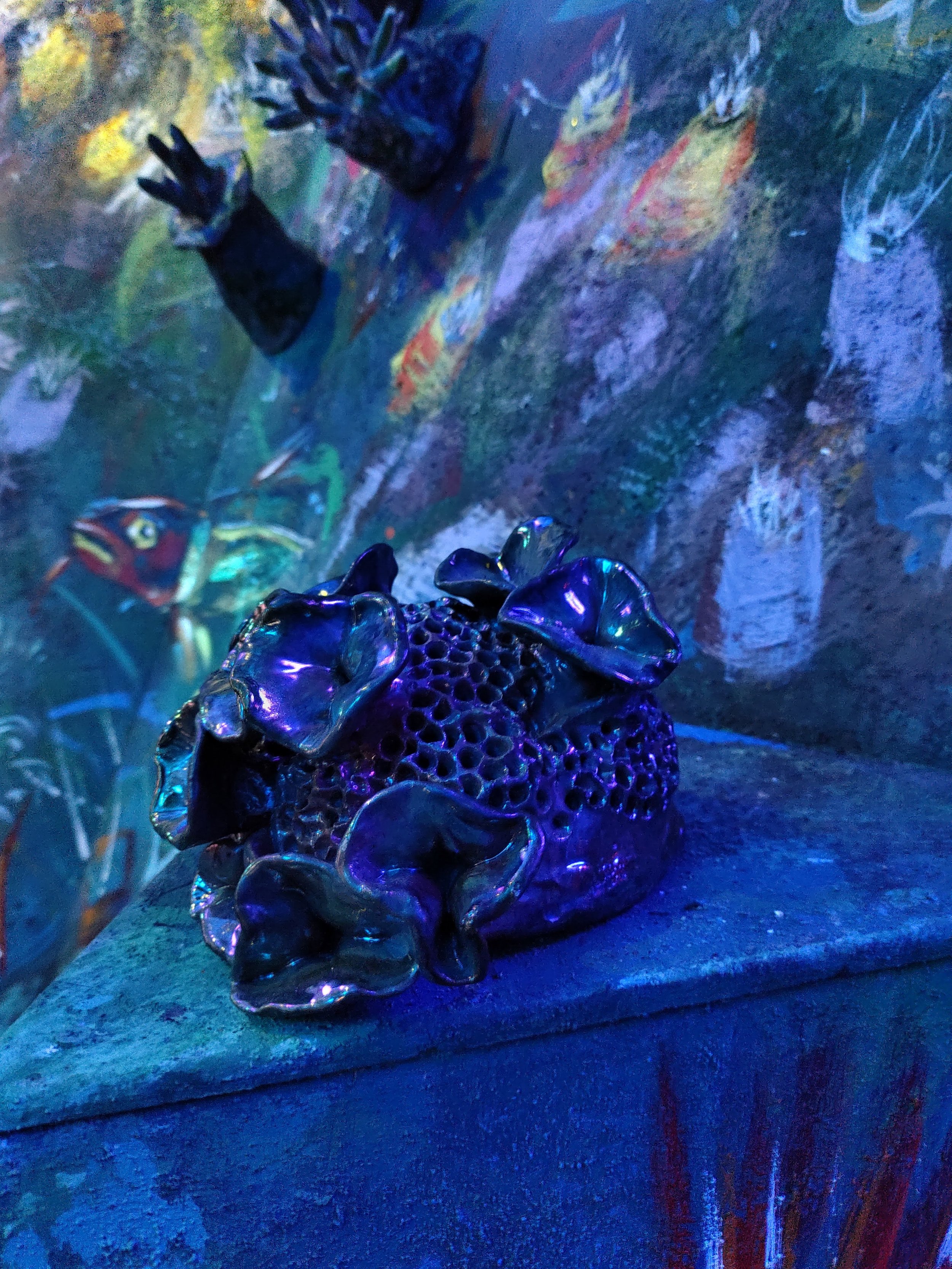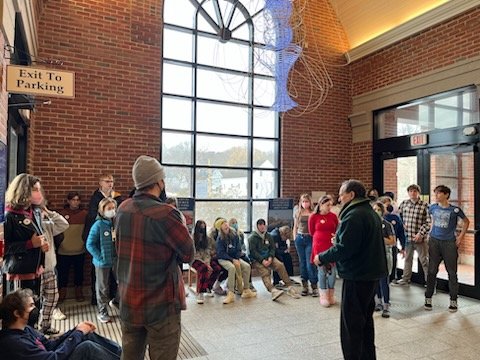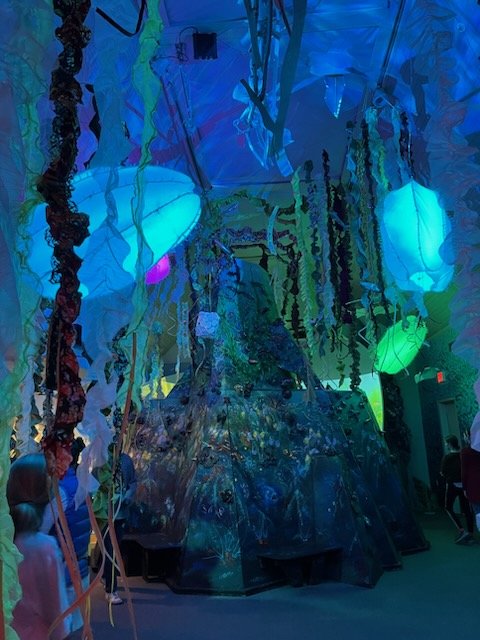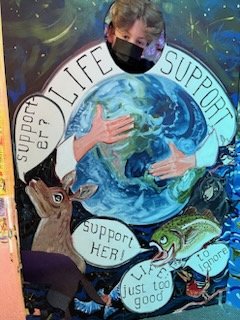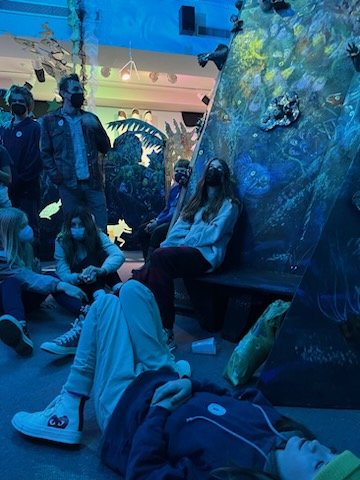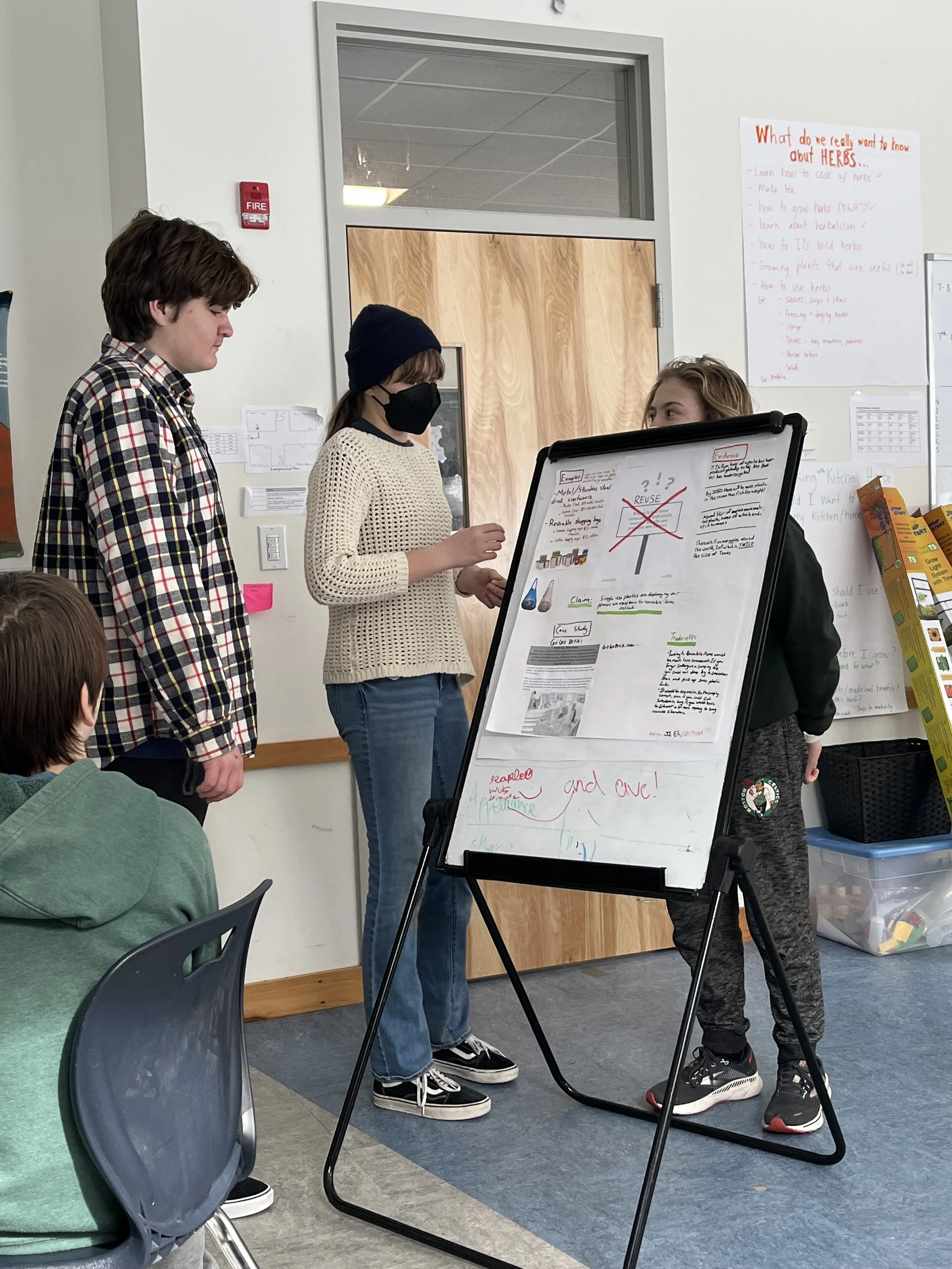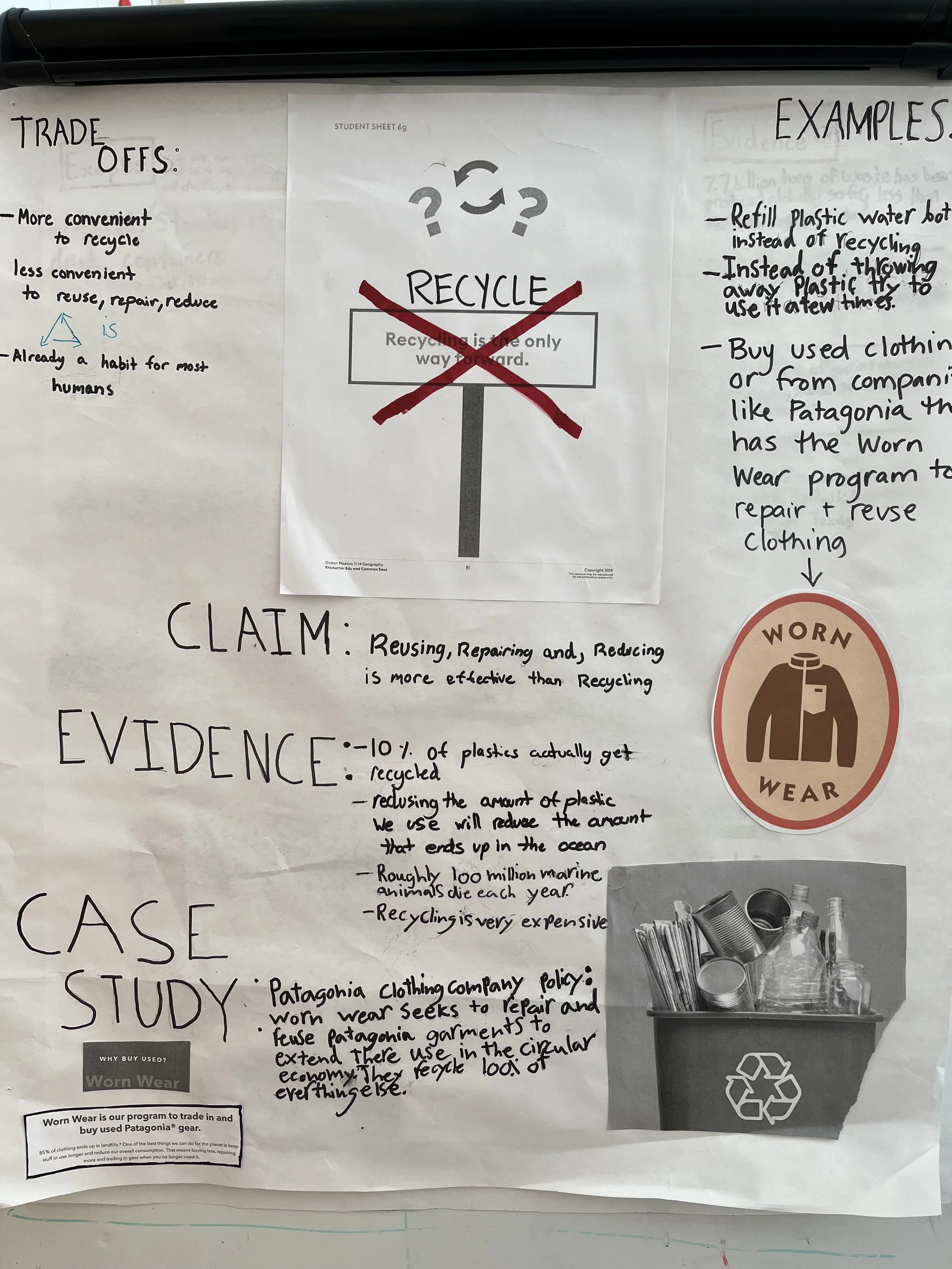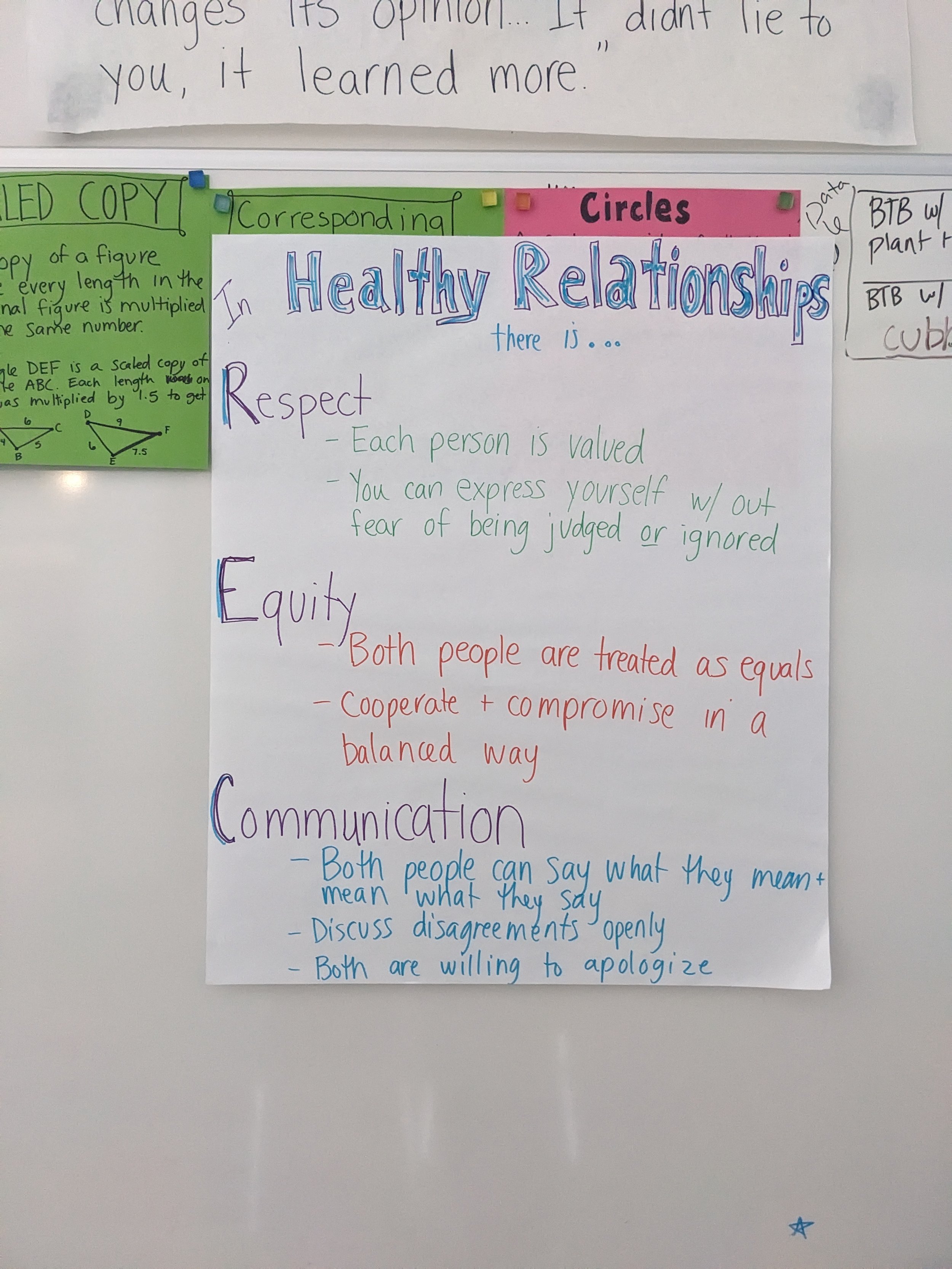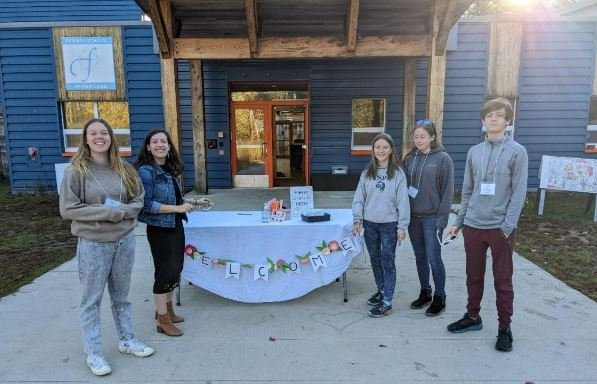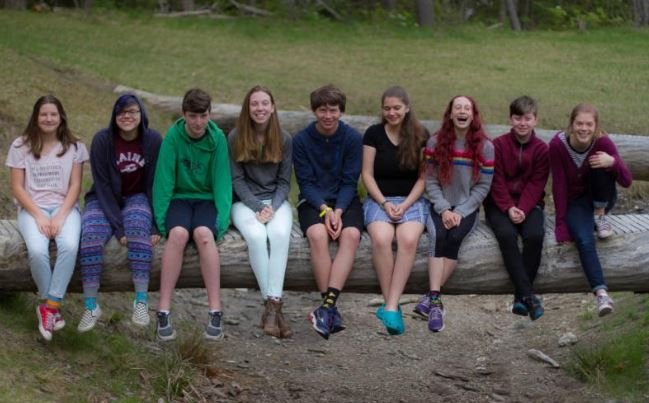One of our north stars at Friends School is getting more comfortable with discomfort. This comes up in the Quaker principle of continued revelation, where truth is continually revealed. This has come up in our commitment to direct communication and having challenging conversations, and it also comes up curricularly in the priorities of teaching critical thinking skills and asking students to sit with uncertainty.
Things look different in Aliza’s math classroom this year. There are more whiteboards than ever before. Sometimes Aliza hands out a card to each student to put them in random groupings. If a student asks her for the answer to a question, she might not answer right away.
These are calculated and research-based choices. Aliza was inspired by the book Building Thinking Classrooms by Peter Liljedahl. He was motivated by the ideas of building thinking and engagement – and the importance of rethinking the roles of student and educator. With these choices, in Aliza’s words: “you’re mixing up the cultural expectations of a classroom in order to get kids thinking harder.”
More dry-erase boards give students a new way to try things, erase them, and collaborate. Visibly random groupings give students the chance to work with other students without predefined social or academic roles. “Students think they might be placed in ability groupings – like if they’re struggling, I would match them up with a student that could help them. But in our room, all students can learn together.”
Aliza encourages students to answer their own questions. “Students often ask questions they can solve on their own. Students think that the ‘role’ of a student is to ask questions and teachers think the ‘role’ of the teacher is to answer them… Instead, this approach highlights the act of breaking down a larger problem into smaller steps – and asking questions to get students to see that.” Here is an example of how that might look: if a student is struggling with 636 divided by 12 and they don’t know how to start, Aliza gives them a sentence-starter. “Can you turn this into a sentence that starts with ‘How many groups…’ and then students would jump in with ‘Oh! How many groups of 12 fit into 636?’ And then I would say ‘OK! What can we do next?’”
It’s about getting messy, being willing to not know right away, and trying new things.That can be uncomfortable – but beyond sitting with discomfort, it is also playful, engaged, collaborative, and exhilarating. The premise is that “discomfort leads to empowerment.” This approach to learning connects to Aliza’s roots as an outdoor trip leader. In that role, she would gradually release responsibility to the young people on the trip. “They would know how to run the whole trip and we would be walking behind them watching.” Similarly, her math instruction gives students a guide. In her words: “I don’t want kids to feel ‘my teacher taught me so much’ – I want them to feel like they taught themselves so much.” In that way, it recasts the conventional role of a teacher. “I model for the students what it’s like to be confused.”
“Until I felt validated by a researcher to do this, I always felt like there was something missing. Nell recommended the book last summer, and it came at the perfect time for me. I’m really grateful that FSP encourages me to try new things and become a more effective educator. It almost feels like the same amount of wanting students to get bold in their exploration of ideas, FSP wants for its teachers. It’s almost like building risk tolerance.”
“The biggest thing I’ve been trying to do this year that is different from other years is to assess thinking and engagement. We tend to assess in math ‘Can you accurately answer this math question?’ but now it is more about: How engaged are you? What percentage of the class are you actually thinking? Never before in my class have kids said ‘My brain hurts.’ That to me is a sign of success – that they want a break because they’ve been thinking so hard.” What about this type of learning would make a student say their brain hurts? Like a muscle sore from strengthening, their learning zone is expanding.
This approach is about students thinking through what strategy to use to approach a problem – as opposed to repetitive mimicking of particular strategies. As a math student, you might remember getting a worksheet covered with problems that are all solved the same way: for example, an “equivalent fraction” worksheet. Students aren’t always told which tools they already have that they’ll need for what’s in front of them. Aliza is trying to help them become self-sufficient in determining the most efficient approach. In Aliza’s words, “My goal is for students to have the tools to apply their math learning to a variety of situations.”
“I had always bought into the myth that math is a disconnected set of facts to memorize, with rules and procedures to mimic. I now call that fake math,” says Pam Harris, math educator and speaker in the “Building Math Minds” conference which many FSP teachers attended virtually. Aliza has noticed that students feel better about starting things when they’re not sure they can finish – or trying things when they’re not sure they’ll get it right. Our math program is more rigorous than typical grade-level standards; this deep thinking is academically a much higher standard than the “mimicking” or “memorizing” approach.
This desire to empower students, by giving them more responsibility over their own learning, is connected to so many other aspects of life at FSP, including the recent middle school student-led conferences.
Students are having an unbelievable amount of success, but Aliza wonders if they are all feeling the power of their success. This type of math feels playful for some students, but it doesn’t always feel that way to everyone. Like so many aspects of learning at FSP, it is the balance (and marriage!) of joy and rigor. As Aliza assesses her next steps, she is thinking more about student resilience, and finding the right amount of stretch for each student. In other words: how to make rigor feel more joyful for each student.
